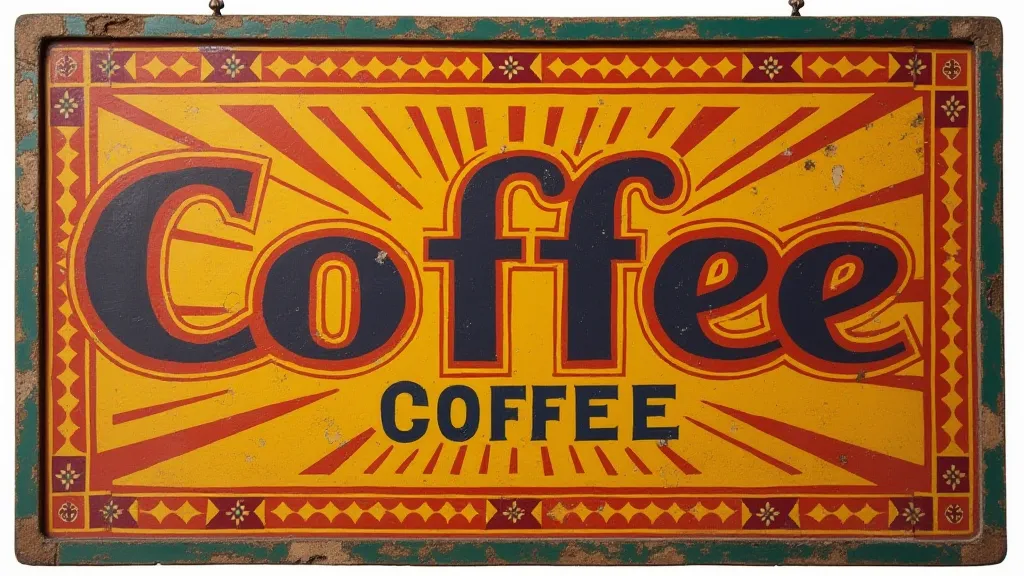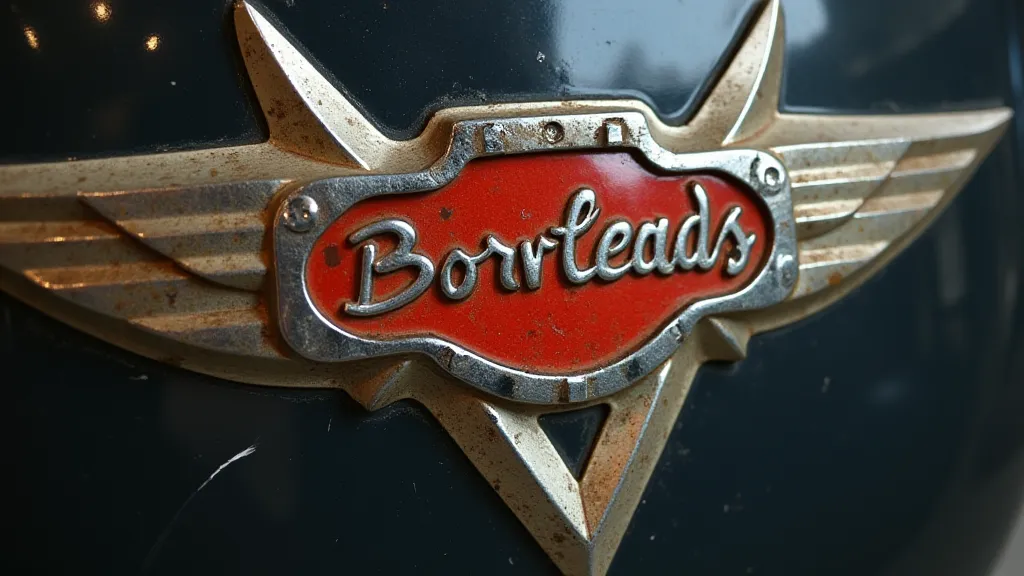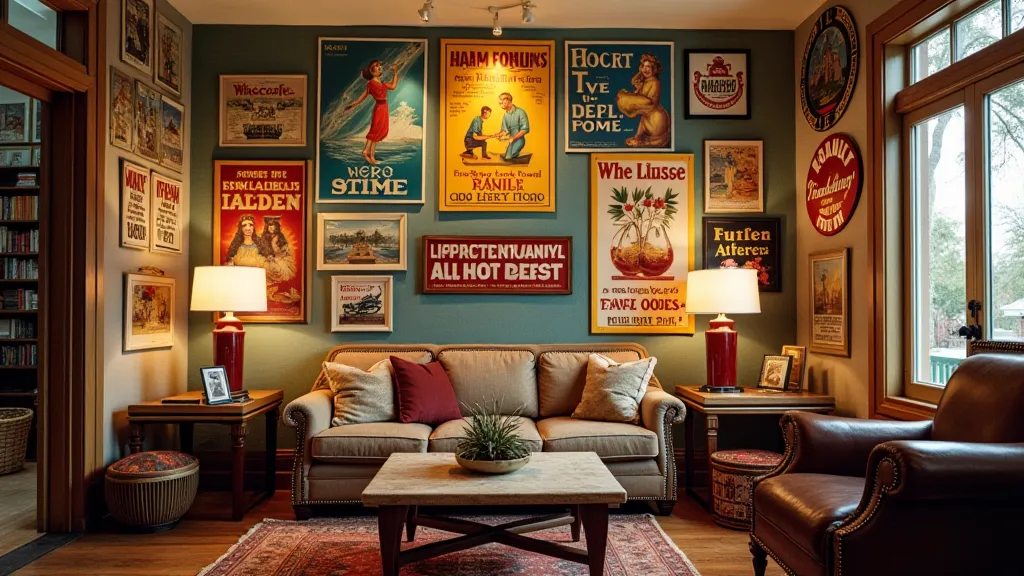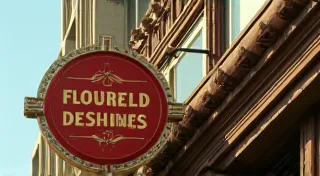The Influence of Art Deco on Advertising Sign Design
The roaring twenties and the years that followed witnessed an explosion of creativity and innovation, not just in music and fashion, but also in the world of design. The Art Deco movement, with its emphasis on sleek lines, geometric patterns, rich materials, and a sense of optimism, profoundly impacted nearly every facet of visual culture. This influence is readily apparent when examining vintage advertising signs, transforming them from simple promotional tools into striking pieces of collectible art.
What is Art Deco?
Born in France just before World War I, Art Deco drew inspiration from a diverse range of sources including Egyptian art (inspired by the discovery of Tutankhamun’s tomb), Cubism, and Bauhaus design. It rejected the organic curves of Art Nouveau in favor of streamlined shapes, stepped patterns, and motifs like sunbursts, zigzags, and stylized flora and fauna. The use of luxurious materials – chrome, Bakelite, inlaid wood, and vibrant colors – further contributed to the movement’s distinct aesthetic. This period saw a fascination with industrial progress and a desire to project an image of modern sophistication, a sensibility that permeated various aspects of design, and, significantly, advertising.

Art Deco's Impact on Sign Design
Prior to Art Deco, advertising signs often prioritized functionality over aesthetics. While they conveyed information, they lacked the visual flair that defines the era’s advertisements. The advent of Art Deco changed all that. Sign makers began to incorporate the movement's signature elements into their designs. Think of the bold typography, the geometric borders, and the overall sense of grandeur. The emphasis shifted from mere communication to creating an immersive and visually compelling experience for the consumer. The shift wasn’t merely cosmetic; it represented a fundamental change in how businesses perceived their relationship with consumers – moving from a purely transactional connection to one rooted in aspirational branding and style.
Several key trends emerged:
- Bold Typography: Fonts became more stylized and geometric, often utilizing sharp angles and clean lines. A sense of modernity and efficiency was communicated through the lettering. The movement's embrace of geometric forms directly translated into a new visual language for advertising, moving away from ornate Victorian-era lettering. The clean lines and strong forms reflected a broader societal embrace of modernity and the machine age.
- Geometric Borders and Patterns: Sunbursts, chevrons, zigzags, and stepped patterns became ubiquitous, adding visual interest and reinforcing the Art Deco style. These patterns weren’t simply decorative; they contributed to the overall sense of dynamism and forward motion that characterized the era. The interplay of these shapes often created a feeling of upward momentum, reinforcing the message of progress and advancement.
- Streamlined Shapes: Rounded corners and flowing lines were replaced with sharp angles and straight lines, reflecting the era’s fascination with speed and technology. The imagery evoked a sense of effortless progress, mirroring the advancements in transportation and industry. Consider how the aerodynamic designs of automobiles influenced sign aesthetics, mirroring the aspiration for speed and efficiency.
- Rich Color Palettes: While traditional advertising colors were often muted, Art Deco signs embraced vibrant hues – jewel tones like emerald green, ruby red, and sapphire blue were frequently used, often paired with metallic accents. These weren't just colors; they were statements of luxury and aspiration. The use of these colors also benefitted from advancements in pigment technology during the period, allowing for a wider range of vibrant shades.

The Materials and Manufacturing Behind the Style
Beyond the aesthetic, the materials used in Art Deco signs further contributed to their allure and collectibility. Lithography, a printing process allowing for intricate and vibrant designs, was commonly employed. Porcelain enamel signs, known for their durability and resistance to the elements, also became popular, particularly for outdoor advertising. The choice of materials reflected a desire for permanence and quality, a stark contrast to the often-ephemeral nature of earlier advertising. The creation of these signs was a specialized craft, with skilled artisans meticulously crafting each piece, ensuring a level of detail and artistry often lacking in mass-produced items. For those interested in the broader context of vintage advertising and the stories these objects tell, exploring the history of echoes in enamel and forgotten brands offers a compelling journey. These vintage signs weren’t just advertisements; they were enduring artifacts of a bygone era, speaking to the values and aspirations of the time.
Popular Brands and Examples
Several industries embraced Art Deco design for their advertising signs. Automotive manufacturers (like Chrysler and Packard) were particularly keen to project an image of speed and luxury. Food and beverage companies also utilized the style to convey a sense of sophistication and modernity. You're also likely to find beautifully designed Art Deco signs for petroleum products, tobacco, and even household goods. The era’s obsession with the new and the fashionable saw advertising evolve into more than just information delivery; it became a form of art and self-expression for businesses striving to stand out from the competition. The influence of Art Deco extended far beyond a select few industries, permeating the marketing strategies of a wide range of consumer products.
Finding examples is relatively common, though condition and rarity dramatically affect value. Look for signs featuring:
- Automotive Brands: Chrysler, Packard, Duesenberg.
- Beverage Companies: Coca-Cola, Pepsi-Cola.
- Petroleum Brands: Shell, Texaco.
The Delicate Process of Restoration
Many of these beautiful signs have weathered decades of exposure, leading to deterioration and damage. Restoring them is a meticulous and delicate process requiring specialized skills and knowledge. Cleaning, repairing cracks and chips, and repainting faded areas all require a careful hand to preserve the sign’s original character and integrity. The goal is to bring the sign back to its former glory while respecting its history and imperfections. The techniques and considerations involved in cleaning and restoring vintage advertising signs are a fascinating area of study. If you’d like to learn more about cleaning and restoring these pieces of history, a deeper look into the process reveals just how much care and skill goes into preserving these artifacts. The understanding of original materials and techniques is essential for a proper restoration, ensuring the sign retains its historical accuracy and visual appeal.
Collecting Art Deco Advertising Signs
For collectors of vintage advertising signs, Art Deco examples are highly prized. Their aesthetic appeal and historical significance make them valuable additions to any collection. Condition is paramount; signs in excellent condition with vibrant colors and minimal damage command the highest prices. Rarity also plays a major role, with signs from smaller or lesser-known brands often being more difficult to find. The passion for collecting these signs reflects a desire to connect with the past and appreciate the artistry and craftsmanship of a bygone era. Understanding where these signs originated and the landscapes they once populated provides a richer appreciation of their context. The cartographer’s palette offers a unique perspective on the geography of lost advertising landscapes and the stories embedded within them. The collector’s pursuit isn't merely about acquiring an object; it’s about preserving a fragment of history, a tangible link to a specific moment in time.

The Ephemeral Nature and Paper Signs
While porcelain enamel and metal signs represent a significant portion of the Art Deco advertising landscape, paper signs also existed, though they are far more fragile and rare. These signs, often printed on thin cardboard or paper stock, were more susceptible to damage from the elements and have largely disappeared. Their scarcity only adds to their allure for collectors, but handling and preserving them requires even greater care. The ephemeral nature of these paper advertising signs speaks to the fleeting nature of trends and the rapid pace of change that defined the Art Deco era. Discovering the nuances and fragility of paper advertising signs reveals another layer to this fascinating chapter in design history. The fragility of these signs underscores the importance of careful preservation and the challenges faced by collectors striving to safeguard these delicate pieces of history.
The influence of Art Deco on advertising sign design left an enduring legacy, transforming functional signs into miniature works of art. Appreciating this connection not only enhances our understanding of sign collecting but also provides a fascinating glimpse into a vibrant era of creativity and innovation. The legacy of Art Deco extends beyond the visual arts, influencing design trends and shaping our understanding of aesthetics and consumerism.





